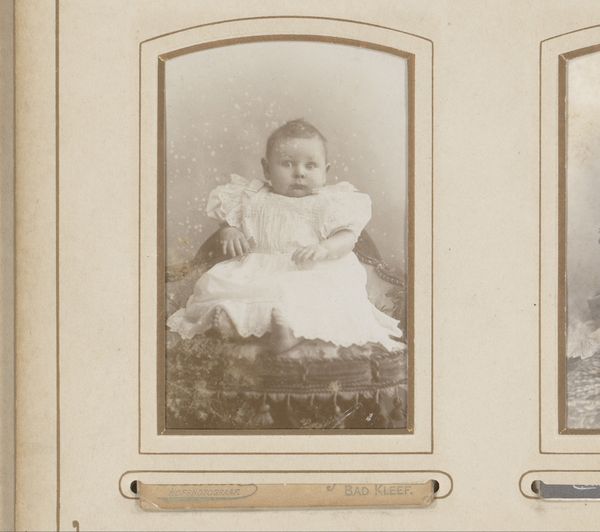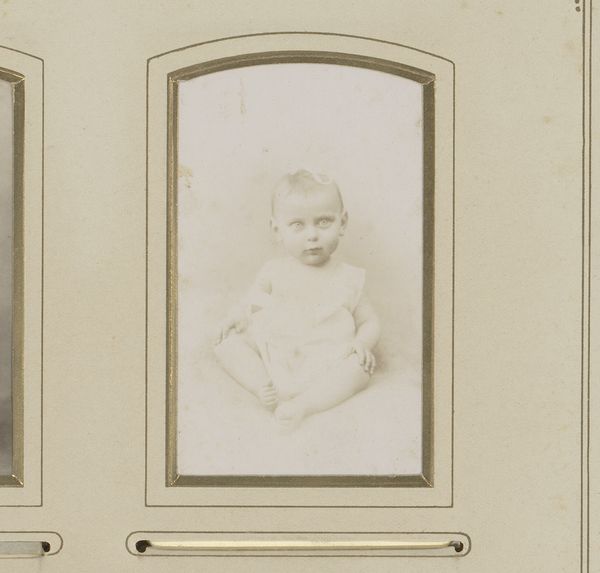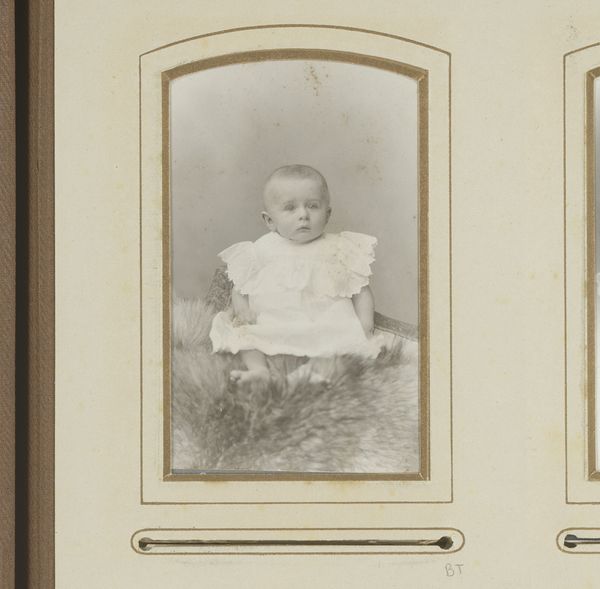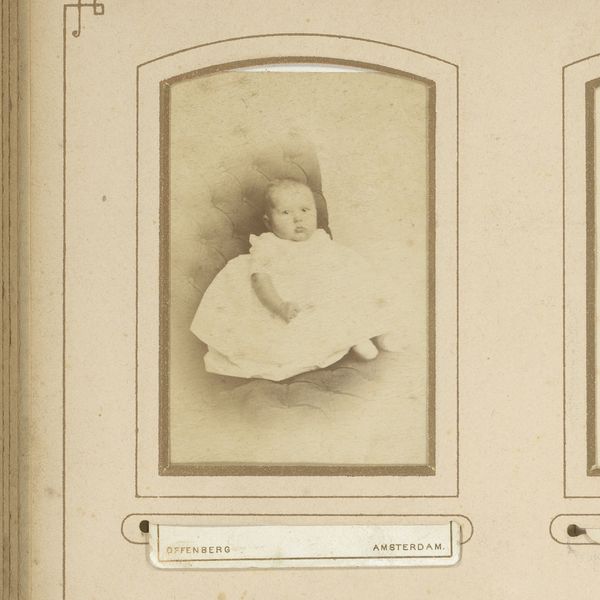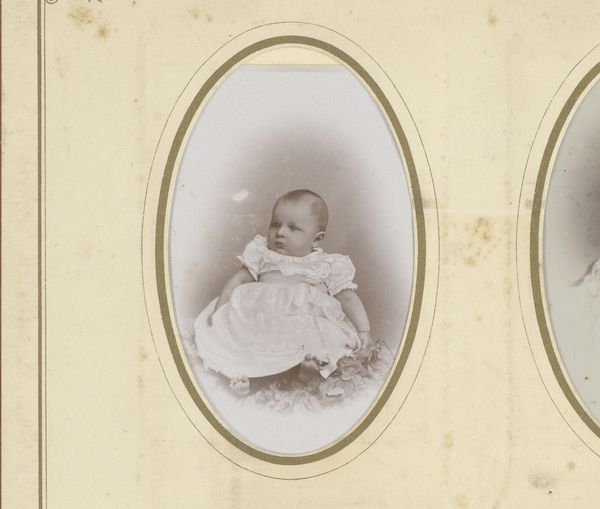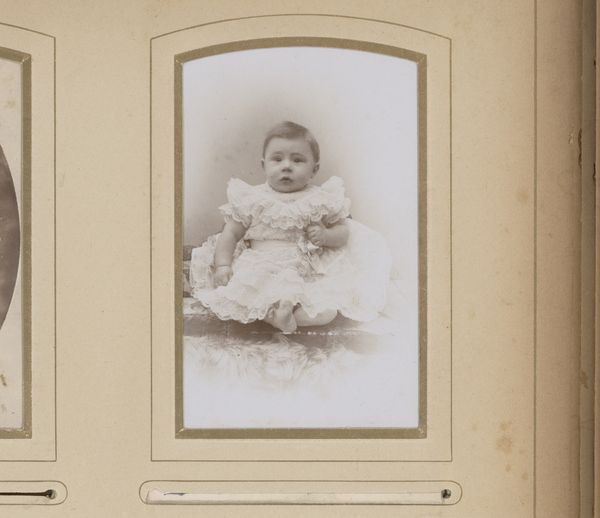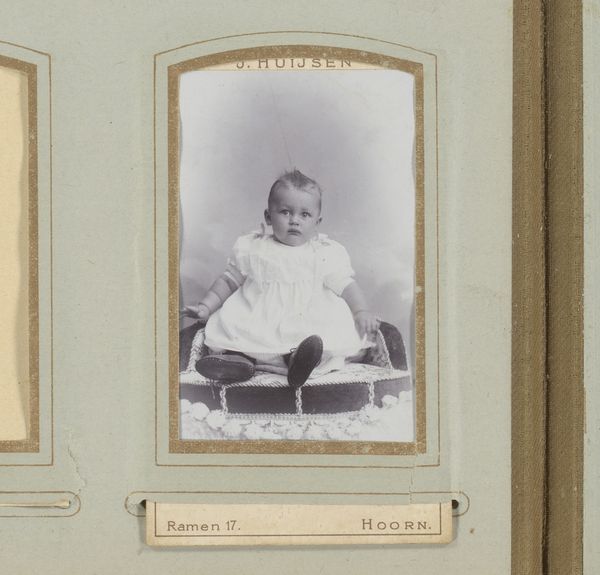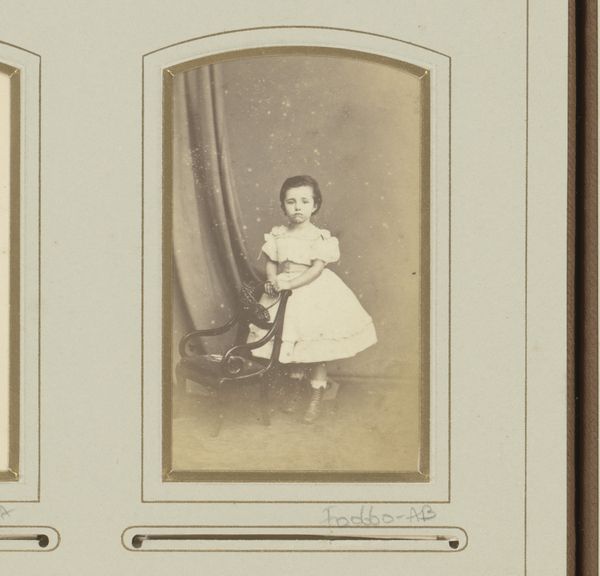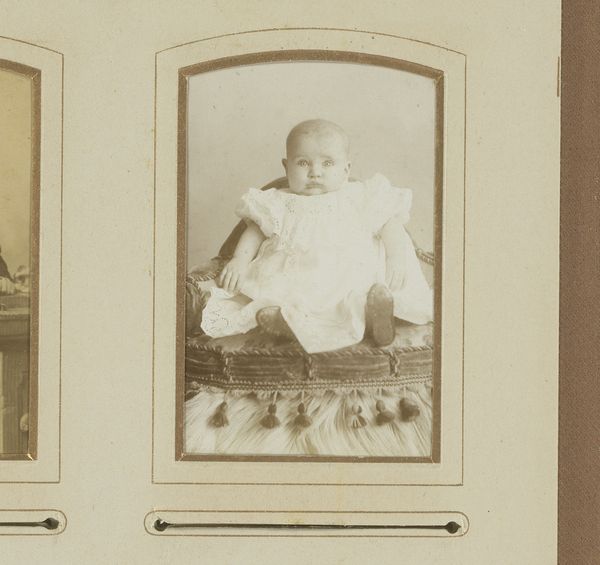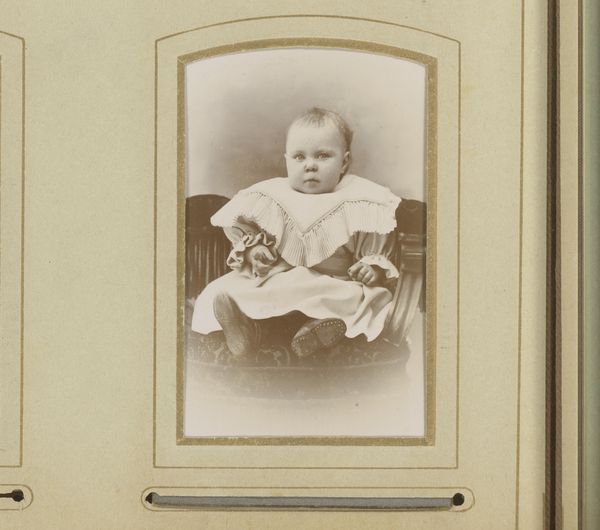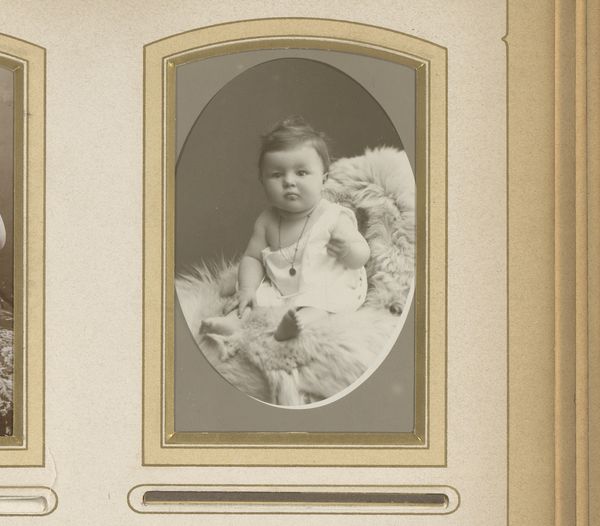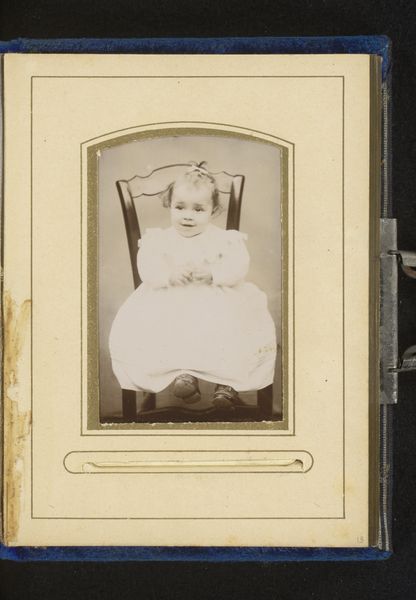
photography
#
portrait
#
still-life-photography
#
photography
#
19th century
#
genre-painting
Dimensions: height 85 mm, width 53 mm
Copyright: Rijks Museum: Open Domain
This small photograph is a baby portrait by Adolf Neumann, taken in Bremen, Germany at an unknown date. It’s fascinating to think about what this image meant at the time it was produced. The late 19th century saw an explosion in professional photography studios catering to a growing middle class. This image is likely a product of that boom. The baby, dressed in a pristine white dress, sits formally for the camera, a visual code indicating its family’s aspirations. The photographer’s address is printed at the bottom, an early form of advertising. The act of commissioning a portrait, even of a baby, speaks to the social and economic conditions of the time. Who were the Neumanns? What did it mean for them to participate in this new visual culture? To fully understand this image, we would want to research the history of photography in Bremen, the social history of portraiture, and the economic status of Neumann's clientele. The meaning of this photograph is contingent on its social and institutional context.
Comments
No comments
Be the first to comment and join the conversation on the ultimate creative platform.
